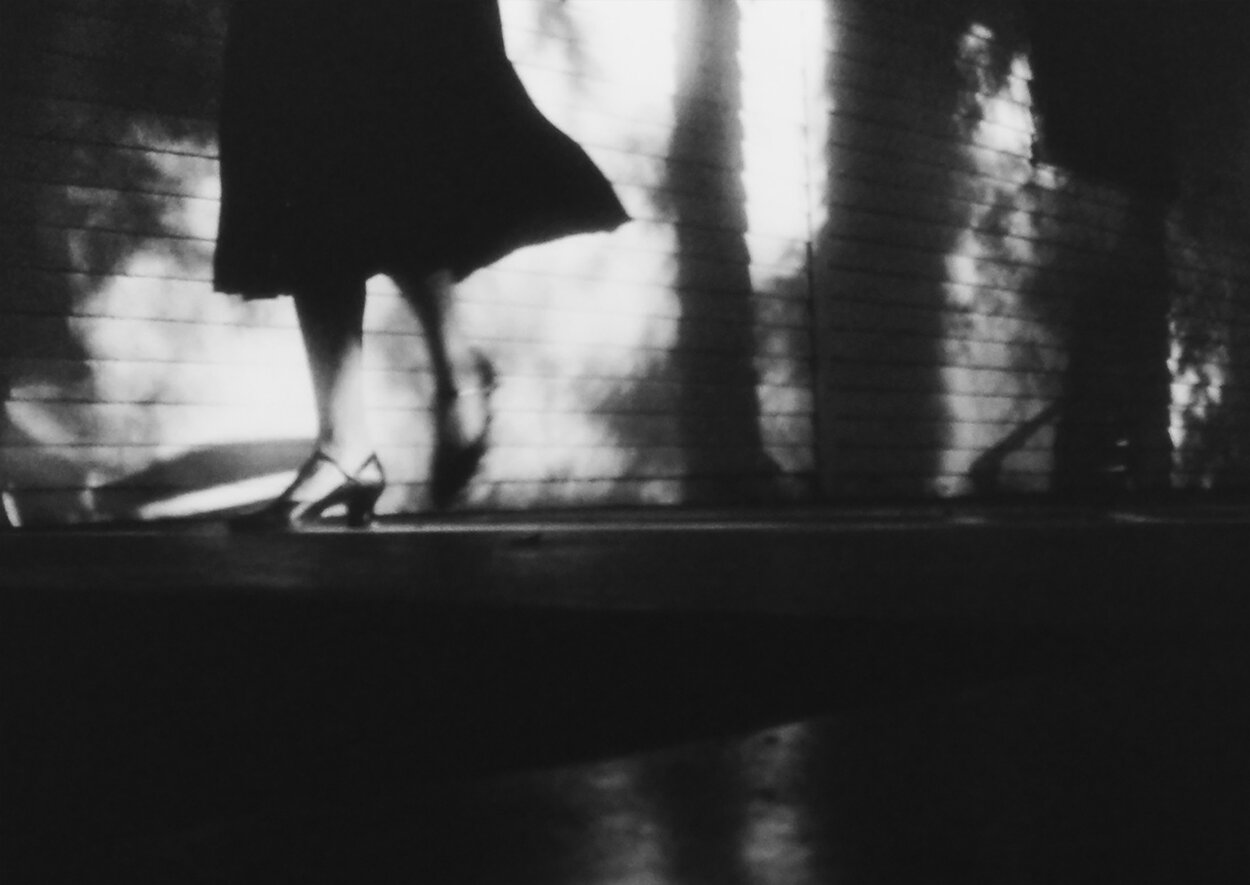16mm Film Stills
From “Whose Avant-Garde?” By Tess Takahashi, 2020
“Chicago-based artist Jean Sousa’s films are formally rigorous, sensually present, and always inventive in their explorations of different cinematic properties. Swish (1982), in Canyon 50 Touring Program 1, is a silent investigation of the medium’s relationship to motion, offering occasional, swishing glimpses of a young Sousa as she dances with her moving camera, her face close to the camera’s open shutter. Ellen on the Rope (1978) features multiple takes of the eponymous Ellen swinging back and forth across the length of a nearly empty loft apartment. The two artists, filmmaker and performer, work together to produce ‘a strobing rhythm by crossing the camera's shutter speed with the rate of the rope traversing its frame,’ in the words of B. Ruby Rich. Sousa’s The Circus (1977) is a colourful and elaborate optically printed film that edges its depictions of circus performers closer and closer to the bright abstraction of moving shapes and colors. Also check out Sousa’s Summer Medley (1977), What Am I Doing Here (1978), Spent Moments (1984), and Today is Sunday (1987). Her mix of structural and somatic investigation gives structural film a completely different feel.”
"...Jean Sousa's films are struggles. They grapple with the unseen, the inarticulate, and the mysterious - the heart's blood that boils beneath the surface. However, Sousa structures her anomalous worlds, her anger, and her sense of disjointedness with coolness and precision. Layers of bravura optical printing, radiant Moholy-Nagy-style graphics, severe camera angles, clean editing, and light tamed window frames, doorways or the shear force of camera movement create a tight, archly didactic effect. Robert Creely once remarked of Charles Olson that the poet seemed to be "looking for a language." Sousa is looking for a language too, but not in the conventional sense. She searches for the communication that lies in spaces, in tensions, and in those lapsed areas twixt thought and voice."
Wendy Brabner, Spiral Magazine, 1984
Spent Moments
An abstract narrative shot from the point of view of a house – the woman is seen from an angle of the wall, the corner observes her. This is a film about fleeting sensations in the midst of ordinary activities, the energy of heat, and the activity of the imagination.
Today is Sunday
Today is Sunday is both a still life and a landscape film in which the characters are described by nature. The relationship of the man and woman is articulated in dialogue with the external environment of clouds, wind, and waves.
The Circus
“….Sousa begins with the footage of performers in the midst of their activities. She then alters the choreography (via optical printing and extensive processing) into a slower, sometimes nearly still, dance of colors and shapes freed of lifelike requirements. Her concern with physicality divides its targets equally between the performing bodies and the film within which they are activated. The Circus flattens the flamboyant action into graphic details, dissolving those details further into mere traces, striations of color, and the pure movement of film grain.” B. Ruby Rich, The Chicago Reader, 1979
Ellen on the Rope
“Ellen on the Rope is an energetically expressive study of performer Ellen Fisher working out on the rope in her Lodge Hall rehearsal space, itself a handsome room of classical proportions and lighting. Sousa’s film studies Fisher’s strenuous activity from a series of vantage points, creating a strobing rhythm by crossing the camera’s shutter speed with the rate of the rope traversing its frame. Unlike other athletic film studies, usually focused on body properties or close-ups of muscular exertion, Ellen on the Rope directs our attention more towards physics, tracing the dynamics and energy of Ellen’s patterns through space with a camera that progresses from tripod stillness to sympathetic motion. A simple exercise, this film offers a fine example of two artists working out together on rope and celluloid.” B. Ruby Rich, The Chicago Reader, 1979
Swish
This film deals with the physical properties of the film medium, and pushing those distinctive features to their limit. The film is about movement, and it is an attempt to get inside of motion. It was made with a moving subject and a moving camera with an open shutter, the result being that each frame is unique, without the smooth continuity inherent in film. The subject, a female body at close range, provides an intimacy and highlights the subjectivity of being close.
Sousa's films are in the Canyon Cinema Foundation in San Francisco, Film-Makers’ Cooperative in New York, and the Collectif Jeune Cinema collection in Paris. They have been shown nationally and internationally at the National Film Theater in London, the Image Forum Cinematheque in Tokyo, the Funnel in Toronto, the Institute of Contemporary Art in Boston, the Cinematheque in San Francisco, the Museum of Contemporary Art in Chicago, Millennium and Anthology Film Archives in New York among other venues.











